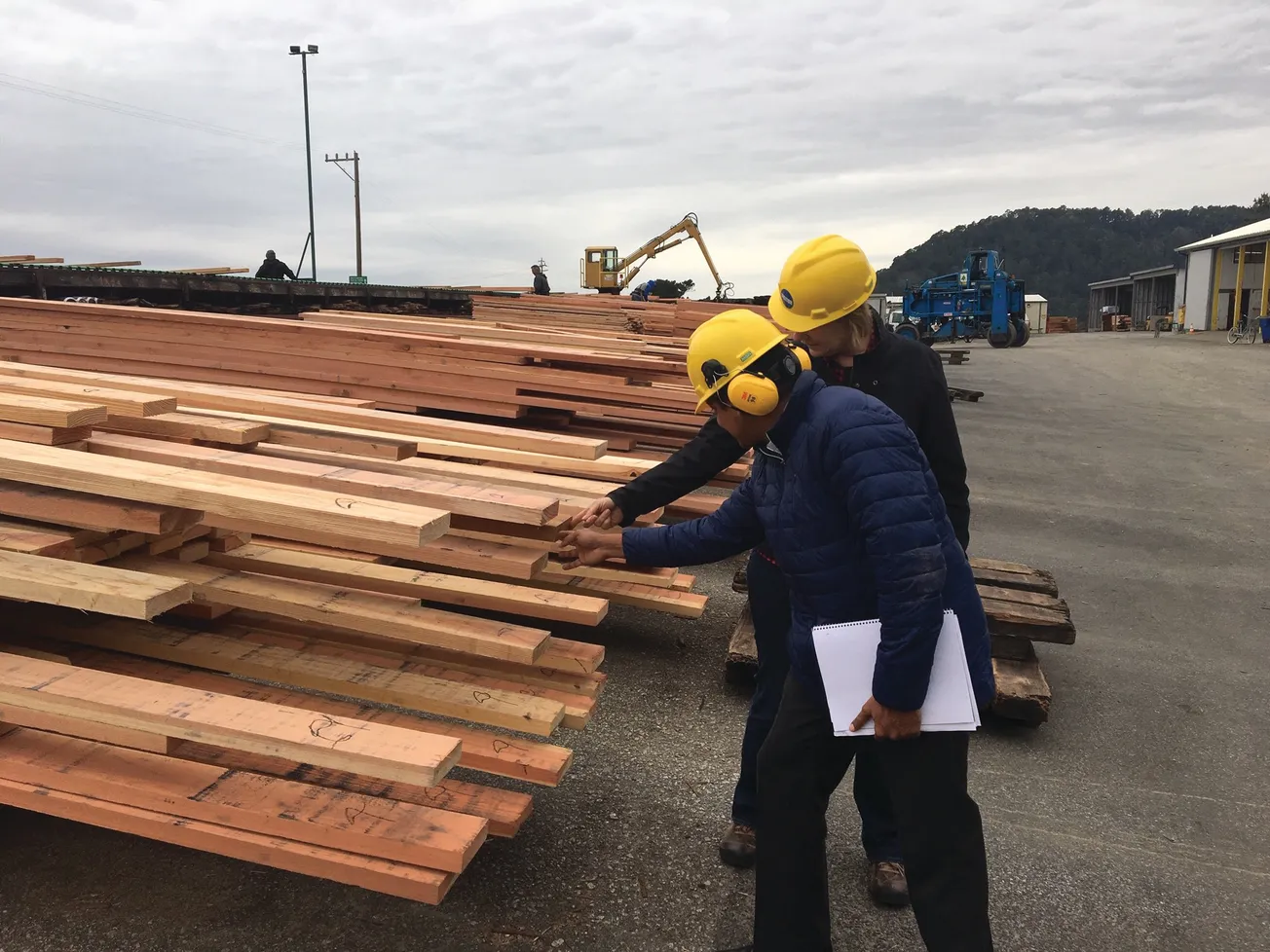Table of Contents
Today, many building products boast about their environmental benefits. Relatively few, however, back up such claims with scientific evidence. For decades, the California redwood industry has supported its claims with scientific data.
Redwood lumber has long been prized for its beauty, natural durability, and dimensional stability. A major study has also confirmed redwood’s status as the premier environmental choice for decking. The study found that the production of redwood decking (as opposed to the production of wood plastic composite and vinyl decking products, which increase carbon output into the atmosphere) absorbs carbon dioxide from the atmosphere storing or sequestering it in the wood fiber. This reduces the potential for global warming.
Redwood was also found to be vastly superior to synthetic alternatives when it comes to much lower levels of air and water pollution produced during manufacture.
The 2013 study, Comparative Life Cycle Assessment of Redwood Decking, was conducted by an independent organization, the Consortium for Research on Renewable Industrial Material (CORRIM). The data generated from the study was the basis for developing an Environmental Product Declaration (EPD) for redwood decking. EPDs present standardized, transparent, verifiable and comparable information for use by developers of green building codes, specifiers, architects and consumers about the environmental impacts of the building materials they use. EPDs are prepared by independent third-party organizations, in this case, UL Environment, in accordance with internationally recognized standards.
In 2018, CORRIM began conducting a new Life Cycle Assessment to update its 2013 study. The study requires collecting and analyzing a tremendous amount of data encompassing redwood timber harvesting practices, lumber manufacturing processes, energy consumption, by-product output and air and water emissions. Data collected includes such things as log volume input, lumber and by-product output, electricity and fuel usage, and the use of ancillary products ranging from hydraulic fluids to plastic strapping. A cooperating member of CORRIM, the USDA Forest Products Lab, sent Kamalakanta Sahoo (who goes by “KK”), a post-doctoral Research Fellow and LCA expert, to the redwood region during the first week of December 2018 to gather data.
Redwood sawmills cooperating in the research include Big Creek Lumber Company, Humboldt Sawmill Co., and Mendocino Forest Products. The level of detail required was encompassing. Dean Kerstetter, executive vice president of Humboldt Sawmill Co., stated, “We generally have data on log input and lumber and byproduct output at our fingertips, but it takes time to come up with how many gallons of various lubricants or amount of other supplies we consume on an annual basis, and we had to go through hundreds of pages of reports to provide CORRIM with the data they need.”
“Energy consumption for all of our processes, including dry kilns, in addition to energy production from our biomass cogeneration plant has all been provided for this LCA project,” added Mike Richardson, Humboldt’s director of operations.
The study has been funded through the U.S. Endowment for Forestry & Communities. The $200 million dollar endowment came into being as part of the 2006 Softwood Lumber Agreement between the U.S. and Canada. A portion of those funds are dedicated to projects addressing the sustainability of forests as sources of building materials.
The American Wood Council, which published the initial Environmental Products Declaration for redwood decking, will use the new Life Cycle Assessment study to publish a revised EPD for all redwood lumber, including fencing, decking and timbers. According to Jessica Hewitt, director of marketing for Mendocino Forest Products, “This whole process may be complex, but in addition to our Forest Stewardship Council certification, the redwood lumber Environmental Product Declaration form the basis for our environmental stewardship and sustainability messaging.”
Janet Webb, president, Big Creek Lumber, agrees that “redwood is an amazing resource and all of these cooperating redwood producers have a really great story to tell.”
For access to the 2013 Redwood Decking EPD or to learn more about EPDs in general, go to www.awc.org/sustainability/epd. The new Life Cycle Assessment and revised EPD for Redwood Lumber will become available in late 2019 and should reconfirm the environmental benefits of using redwood lumber.





